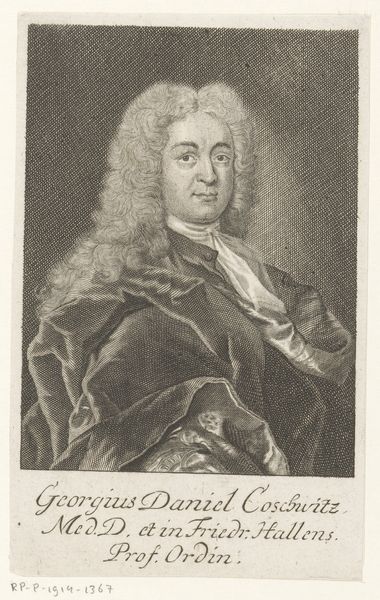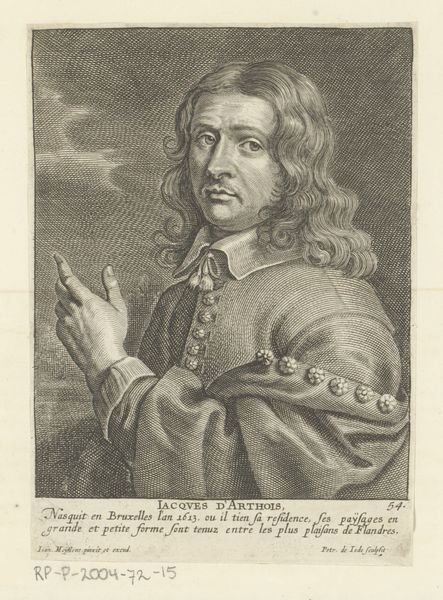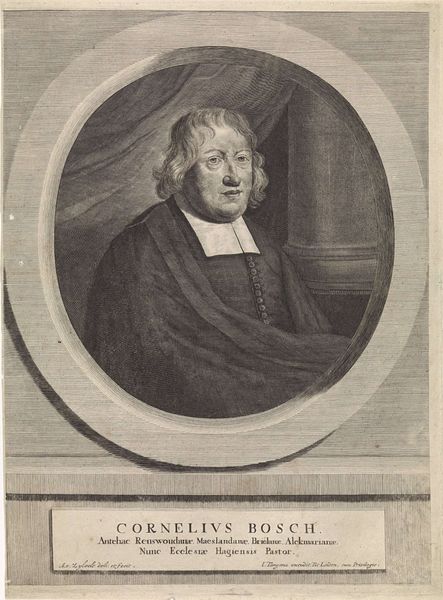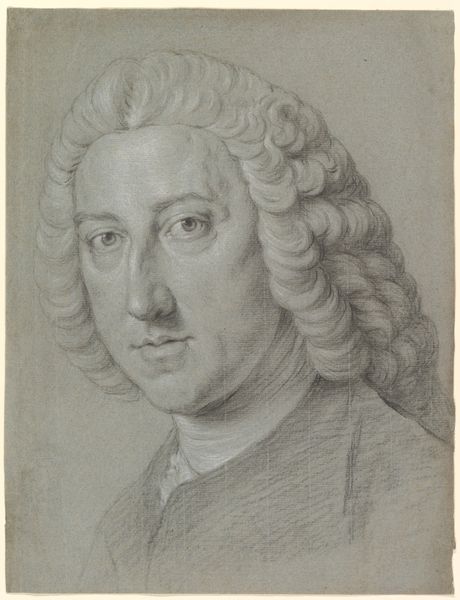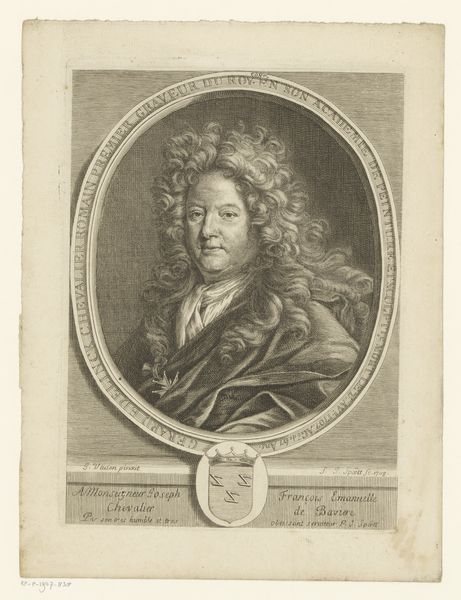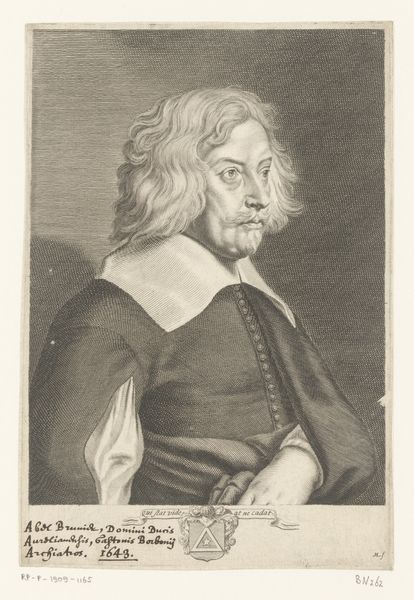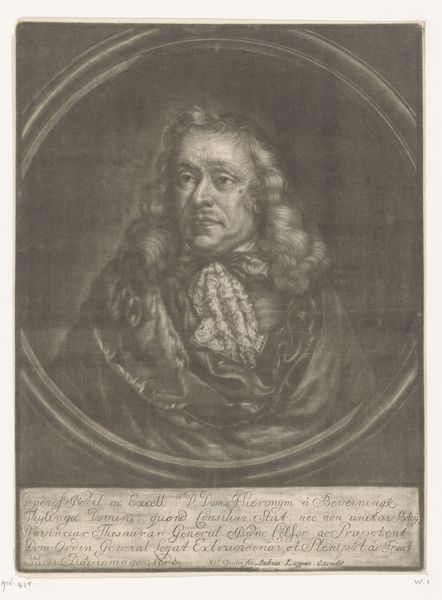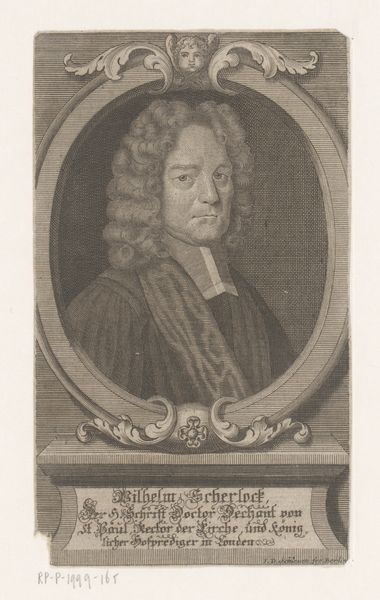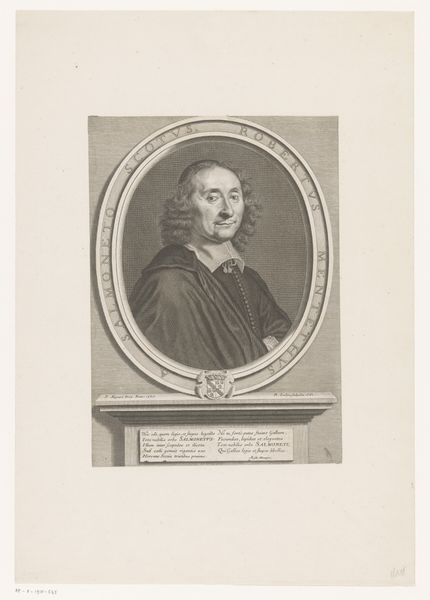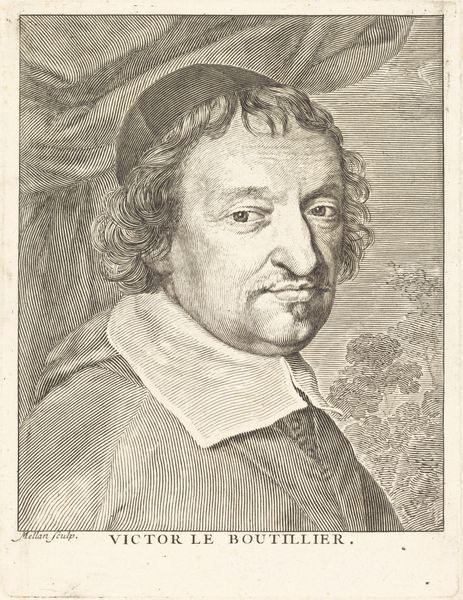
engraving
#
portrait
#
baroque
#
old engraving style
#
form
#
portrait reference
#
line
#
history-painting
#
engraving
#
realism
Dimensions: height 180 mm, width 131 mm
Copyright: Rijks Museum: Open Domain
Editor: This is "Portrait of Willem van Alphen," an engraving probably made sometime between 1682 and 1740, by an anonymous artist. There's a formal, almost somber tone. I'm struck by the intense detail achieved through the engraved lines. What do you see in this portrait? Curator: The power of this seemingly straightforward portrait lies in understanding its historical context. We see Willem van Alphen, not just as an individual, but as a representation of the Dutch ruling class. The engraving, with its detailed realism, served as a form of documentation but also legitimized their power. How might his role as Secretary influence how he wanted to be seen? Editor: So, it's less about him as a person and more about the power structure he represents? Curator: Exactly. Consider the societal expectations and gender roles of the time. How did the patriarchal structures of Dutch society influence Van Alphen's presentation of himself? This image is also promoting a certain image of masculinity that's closely tied to power and intellect. Do you notice anything that stands out in relation to other historical art styles or traditions? Editor: I see it also reminds me a little of realism but less of a romantic painting like other similar pieces from the 18th century, so the expression feels genuine...even kind of world-weary. Curator: Interesting. That “world-weariness,” as you put it, may also reflect anxieties around class and identity during a time of societal and economic shifts in the Dutch Republic. Understanding those elements is also helpful for connecting it to a contemporary understanding of portraits. What are some things that might stay the same? Editor: I see how the image reflects historical ideas and anxieties. The conversation's really given me a much more political sense of what a portrait from that time might have represented! Curator: Indeed! By interrogating seemingly simple images, we uncover complex webs of power, identity, and representation that continue to resonate today.
Comments
No comments
Be the first to comment and join the conversation on the ultimate creative platform.
